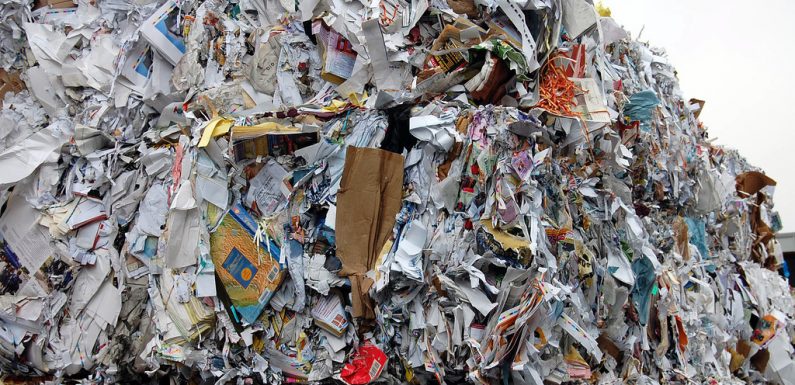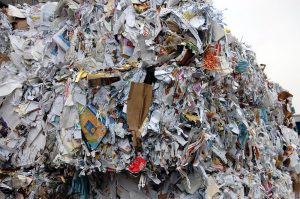
The paper industry generates global annual revenues exceeding $500 billion dollars, producing over 300 million tons of paper products.
Paper industry in the US accounts for approximately one-third of the global output, while the European market is valued at approximately one-fifth. The industry relies on forest crops with harvest rotations as short as 7 years and as long as 100 years.
100 km of paper per hour amounting to 500,000 tons per year is produced by large economies.
However, only a few nations and groups focus on the most important aspect of sustainable paper production – recycling.
The European industry scores best in recycling. 42% of all their new paper comes from used content. In the United States only 119 mills solely relying on recovered paper.
However, the amount of paper supplied to the US market has dropped from 105 million tons in 1999 to 79 million tons in 2009. However, only 36% of the fiber used to make new paper products in the US is recycled. On the other hand, 63.4% of all consumer paper was recycled in 2009.

In the East, India relies heavily on bamboo, which generates per hectare per year up to four times more fiber than a fast-growing genetically modified pine or eucalyptus. Recycling one ton of newspapers saves one ton of trees, while recycling quality copier paper saves more than two tons of wood. Recycling paper could save up to 70% energy.
Since paper mills generate a major portion of their energy from burning bark, roots and lignin, an increased amount of recycling implies a lower amount of renewable energy input at the paper mill which must be sourced elsewhere.
Innovative Recycling
Nobel Laureate Steven Chu discovered that the use of sodium sulfate – known as Kraft process – can be replaced by an enzymatic process inspired by the wood digesting ability of termites.
Apart from that, a group of Malaysian researchers based from University of Sarawak discovered how to produce a family of enzymes, grown in palm waste and rice husks, to remove ink from recycled paper without the use of any chemicals.
Several other scientists have studied the behavior of wood under heat and pressure. They found out that wood processing industries target cellulose alone, which represents only 50 % of wood.
The rest, lignin (20%-30%), hemicelluloses, and lipids, is traditionally incinerated as a chemical cocktail.
A processing system was later developed that – without the use of chemicals – using only saturated water steam pressure and temperature, permitted the separation of wood into four different fractions.
This technique became known as steam explosion. It permits the recovery of each component individually: pure sulfur free lignin as adhesives, phenols as biochemicals or clean fuel, hemicelluloses as raw material for edible sugars and biochemicals, lipids as oil and biochemicals, and cellulose to produce paper and bioethanol, and nano-fibers for new composites, and packaging materials.
It was found that fibers for paper only represented a minor fraction of the total biomass, compared to sugar cane and bamboo and prolific cellulose producing plants, the long term competitiveness of wood for paper relies on the generation of multiple revenues with all available resources.
If all four major components could be separated using only a closed-loop cycle of water and no other chemicals, then a new business model emerges. This model would generate multiple cash flows as there are no waste products left, and each by product is its own industry.
Conclusion
Just like algae could produce food, fuel and fine chemicals, wood should not be reduced to cellulose only, with all leftovers to be incinerated.
Recycling is of utmost importance. But not all products found in wood are environment friendly. The only clean fuel component here is lignin which in its pure form, extracted through the use of pressure and temperature only, is too valuable to burn or not burn at all.
This approach will give the industry an opportunity to tap wood and convert them into clean products and multiple cash flows.
